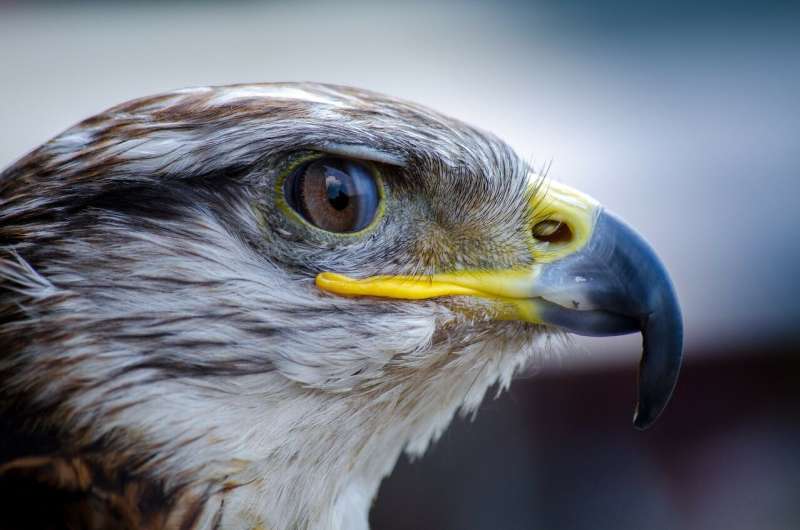June 12, 2019 report
Study of olfactory bulb ratio in modern birds suggests dinosaurs may have had strong sense of smell

A team of researchers at University College Dublin has found evidence that suggests some dinosaurs may have had a very strong sense of smell. In their paper published in Proceedings of the Royal Society B, the group describes their study of the olfactory bulb ratio in modern birds and how they used it to predict possible olfactory strength in certain dinosaurs.
In most modern animals, the size of the olfactory bulb correlates with the strength of their sense of smell—its size relative to the rest of the brain is its olfactory bulb ratio. For many years, scientists have used the olfactory ratio as a means of estimating how well an animal can smell. Prior research has shown that the size of the olfactory bulb is related to the number of smell receptor genes in the DNA of a given animal, and how much diversity they represent. Taken together, it is called the olfactory repertoire (OR). In this new effort, the researchers used the OR of modern birds and an alligator to estimate the olfactory ability of several types of dinosaurs.
The brains of dinosaurs do not fossilize, of course, so there are no examples of olfactory bulbs from dinosaurs to examine. But there are endocasts—brain imprints found on the inside of a skull. The researchers used them to estimate the size of the olfactory bulb in several dinosaurs. They then gathered OR data on a large variety of birds and one alligator. In looking at average ORs for animals alive today and comparing them with olfactory bulb size in non-avian extinct dinosaurs, the researchers were able to come up with estimates of the strength of their sense of smell.
The researchers found that many of the larger dinosaurs likely had very good senses of smell—Tyrannosaurus Rex, for example, was likely able to rely on its sense of smell for various purposes, including obtaining food. They point out that their study does not, however, clear up the controversy regarding whether the fearsome dinosaur was a strong predator or simply a scavenger.
More information: Graham M. Hughes et al. Olfactory receptor repertoire size in dinosaurs, Proceedings of the Royal Society B: Biological Sciences (2019). DOI: 10.1098/rspb.2019.0909
Journal information: Proceedings of the Royal Society B
© 2019 Science X Network



















